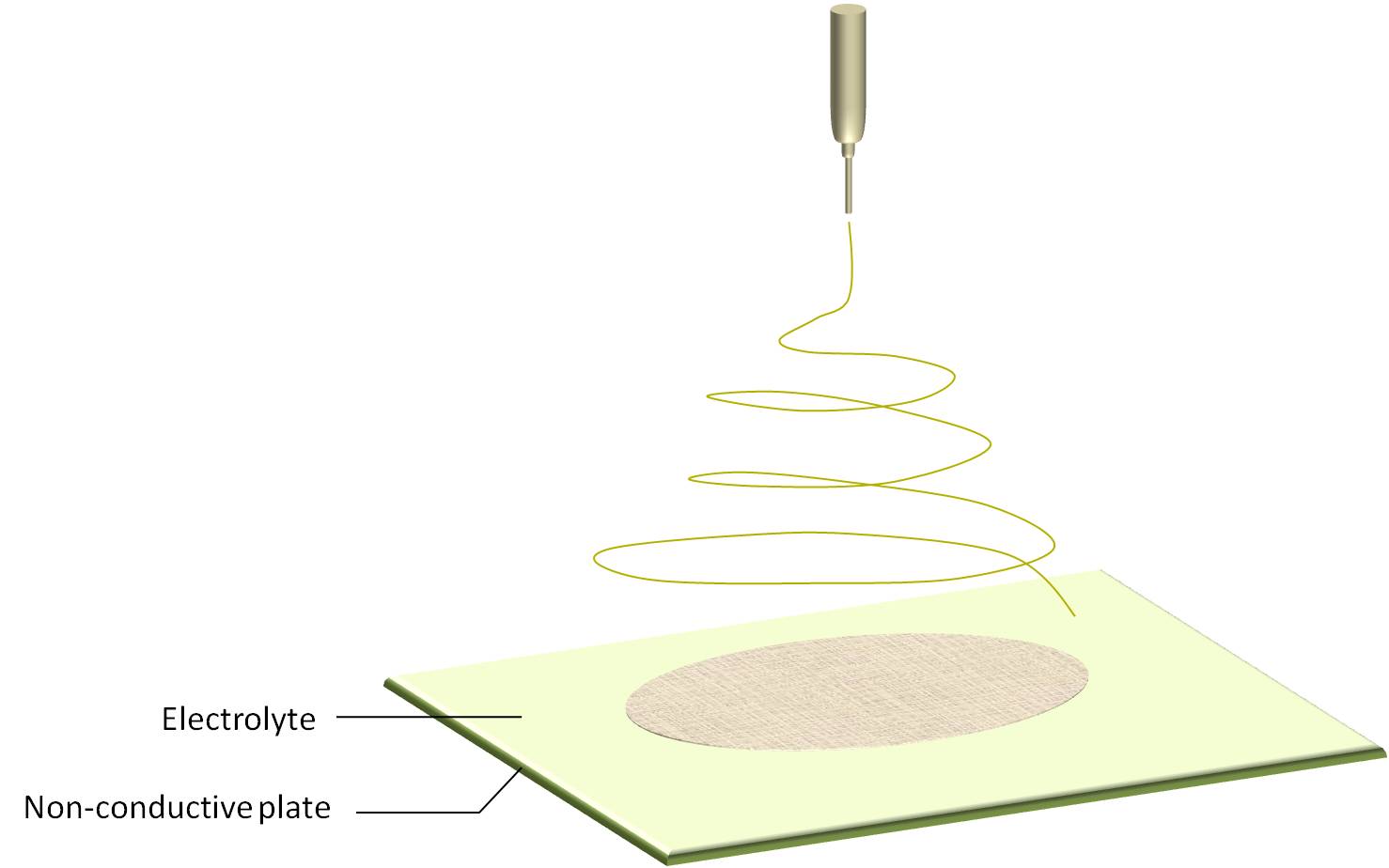Fabrication of electrospun fibers membrane without support
Electrospinning requires a solution ejector and a collection target. In most cases, the collection target is an electrically grounded collector plate or drum. However, the deposited fibers often adhered to the surface of the solid collector which results in damage to the membrane when it is peeled off from the collector surface. In some applications, it is necessary or desirable to have free standing fiber membrane and it is preferred that the membrane does not suffer any surface damage.
For a solid collector, there are a few ways of reducing the problem of adhesion. A non-stick coating may be applied to the solid collector surface to facilitate detachment of the membrane off it. Another method is to use a separation coating or release agent such as applying an oil layer or water-soluble layer. For collection of random fiber membrane, there is a simpler method of getting free standing fibrous membrane and that is to use a liquid collector. A liquid such as water may be used for the collection of electrospun fibers. An advantage of a liquid collector especially water, is that it can be easily removed following fiber deposition. Since the fiber is floating on the water surface, there is no adhesion between the fibers and any solid surface. The collected membrane can be removed from the water and dried in air with minimal contamination. This method has also been used in the collection of aligned fiber membrane. Park et al (2016) used electrolyte solution on parallel collector electrodes to collect aligned polycaprolactone fibers. For the parallel collector electrodes, they used poly(methyl methacrylate) (PMMA) plate with a thru-hole. The surface of the PMMA plate was covered with 3M KCL electrolyte solution which served as the grounded electrode. During electrospinning, the PCL fibers were deposited across the through hole and on top of the electrolyte solution without touching the PMMA. This allows the easy removal of the aligned fibers. This concept uses a non-conductive container which reduces the probability of fibers adhering on the container and a conductive solution as the collector. This concept can be easily expanded to the collection of randomly oriented fibers without the need for a large liquid reservoir.
 Schematic representation of a thin layer of electrolyte on non-conductive plate for collection of fibers. |
Last updated: -
 ElectrospinTech
ElectrospinTech